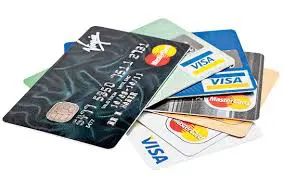When we bought our first home, it took all we had—actually, it took more than all we had. We ended up relying on credit cards to make it through our first winter with very high utility bills and the need for some efficiency repairs. We did our best to slide the resulting balance from interest-free card to interest-free card in an effort to keep it from snowballing into insurmountable debt. It was during those slides that I realized, I didn’t need to pay 3 to 5% to transfer our debt, I could do it for free and reduce that debt in the process.
How can you transfer credit card debt for free?
First, you need to determine how soon you need to move your debt. If you have a zero-interest period, for example, in many cases, any balance remaining when that period ends will be charged interest from the date of the original purchase. This obviously doesn’t apply if you are simply looking to move high-interest balances to a lower interest card or take advantage of a zero-interest period.
Second, find an appropriate card for the transfer. I prefer to choose cards with a good rewards system, a low after-introductory interest rate, or a bonus offer—all three is ideal. For example:
-The Bank of America Cash Rewards card offers a $100 cash back bonus for spending $500 within your first 90 days. It also provides 1% back on all purchases, 2% at grocery stores, and 3% at gas stations.
-The Capital One QuickSilver card offers $100 if $500 is spent within 3 months with 1.5% cash back on all purchases.
-American Express offers the Blue Cash Everyday with 1% back on all purchases and a $100 cash back bonus on purchases of $1,000 or more in the first 3 months.
–Discover It offers double cash back on your first year of earnings. For example, if you spend $2,000 in your first year, you’d earn 1% as you spent it, then a second 1% at year end.
These are all no-annual fee cards with cash back programs, but you can also look at other rewards types (though these don’t reduce debt directly).
Next, pay all of your normal in-cash purchases with the new card. For example, I usually pay our electric, gas, phone bill, etc with our debt card. These set-bills are a good starting point, but you can also use everyday purchases, such as grocery trips.
Now, take the cash you didn’t spend in the last step and immediately apply it to the card you are transferring from. It is important you do this step, preferably right away, so that you don’t end up spending the cash on other things and simply gain more debt rather than transferring it for free.
That’s it. Sounds simple doesn’t it? But let’s take a hypothetical here on the savings possible with this method.
Say you have $1,000 in credit card debt you want to transfer. By not just initiating a balance transfer you avoid the 3 to 5% balance transfer fee. As 3% is the most common, we’ll call that $30 in savings on a $1,000 transfer.
Then, because all of your purchases are indeed purchases and not a transfer, you gain rewards on them. Almost all rewards programs offer a minimum of 1%. This adds another $10 in savings at least. If you managed to also grab a bonus offer, such as the $100 credit on $500 spent (this is a common offer) you reduced your $1,000 debt to $890 just by transferring it, while avoiding the $30 balance transfer fee. This doesn’t even consider the interest-rate savings that are possible. This technique can be used to transfer balances for free to consolidate debt or pay off student loans too.
But, a word of caution, this obviously requires good enough credit to get approved for a new card. It also requires being diligent about actually paying the cash you don’t spend on the original card. Finally, this will slightly impact your credit score if performed repeatedly because the number of open accounts on your credit increases and the average account length reduces. However, it can be an effective way to reduce debt and transfer debt for free in a pinch.

